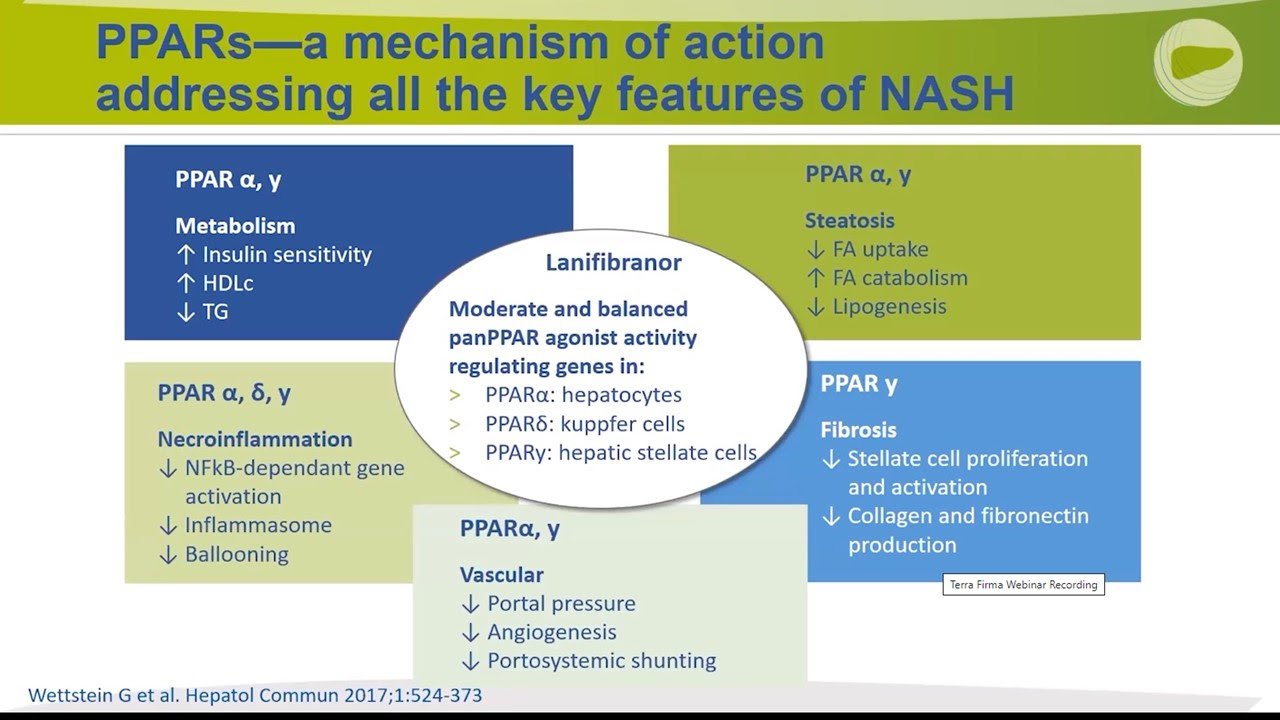PPAR -- Peroxisome proliferator-activated receptor
Lanifibranor by Inventiva leads the way
Wayne, you must be crazy to think I'll read something that starts out like that!!!
Be calm, I promise, it will make sense and if liver disease interests you this will be worth your time.
Therapies for NAFLD/NASH have been an elusive target and recent history is littered with promising molecules that many thought were finally going to lead to treatments for our disease. This is not a trivial problem. People are dying and our weapons are coffee and vitamin E.
Don't get on me about lifestyle right now. I know that tune but I also connect through our peer groups with thousands of people who need more than that and drugs will be part of a proper management of this disease if we can ever find something that works.
So what is it with PPARs? OK, a tiny bit of biology. Cells are complicated and there are a lot of chemical things happening that make life possible. We all know that DNA and genes are the foundations of life but without some way to cause chemical reactions to happen DNA is nothing but a dumb string that hangs around like your worthless brother in law.
It isn't quite this simple but the PPARs are a class of proteins that connect to DNA and cause the genes to do something. There are 3 main types of PPARs and they exist in most cell types and play a critical role in what happens inside that cell. Because they affect so many things and regulate some of the most important functions it makes sense to think that if we can manage them we can help cells remain healthy. This chart will give you a sense of the wide ranging influence of the PPAR family.
To understand the situation it is helpful to see how these drugs fit in the research landscape. You will have to look at a larger view of this slide since there are a lot of drugs being studied but look in the upper left where it says METABOLIC and PPAR Modulators. If you examine that slice of the pie you can see the drugs being considered for NASH therapy. That center gray circle shows the ones in phase 3 of clinical trial. You can see that Elafibrinor is the most advanced but, sadly, that trial has now failed leaving Lanifibranor still in the hunt and leading the pack.
I am particularly interested in Lanifibranor because most of the molecules being studied are focused on just one or two of the three types of PPAR and we have seen that this can lead to unwanted side effects. Conceptually if you could have very precise control of specific chemistries you could have the precision medicine people dream of. Perhaps one day, but we really don't know how to balance all of the processes that are happening in cells.
Lanifibranor has a very nice balance across functions which is nicely portrayed here.
The three families of PPARs are related and overlap in function but of the drugs currently in trial only Lanifibranor shares function with all three. With our limited knowledge today, we think this approach has a chance to succeed with fewer side effects and as patients those side effects are a big deal.
One more thing, if you have a chance to participate in a clinical trial for one of these drugs, please volunteer. We will continue to die slowly and in pain from the complications of fibrosis when lifestyle change alone doesn't get us to a healthy place. That can't change until the research has been done so come to the party if you get a chance.









